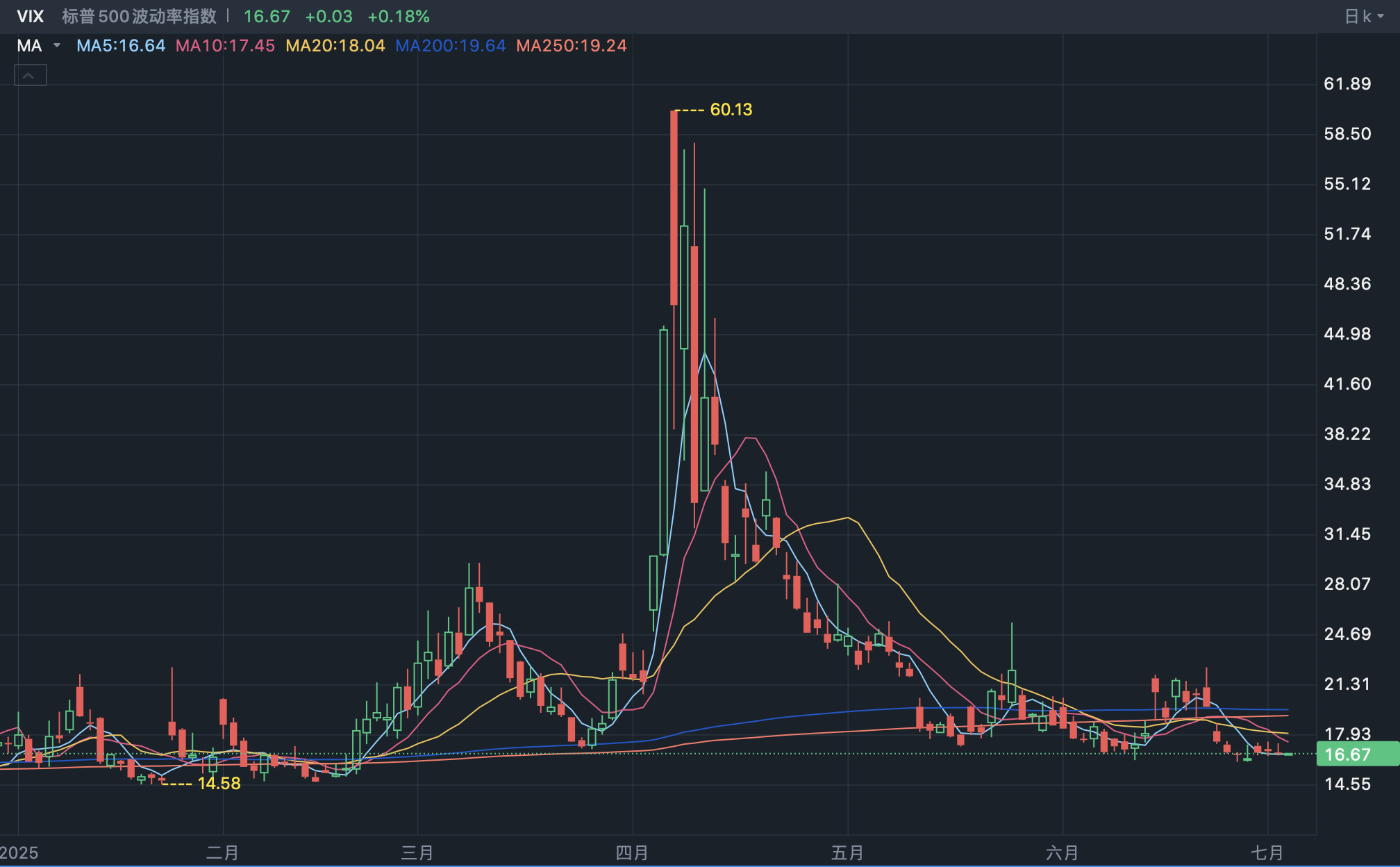In the first half of 2025, the U.S. stock market showed overall strength amid significant volatility. The S&P 500 rose by 5.5%, while the Nasdaq Composite gained 5.48%, hitting a record high. Tech stocks rebounded after an initial decline, policy uncertainties, and a speculative frenzy in the options market emerged as defining features, setting the stage for potential shifts in the latter half of the year.
Market Performance: Tech Stocks Stage a Comeback
In the first quarter, tech stocks faced a sharp correction, compounded by the Trump administration’s sudden announcement of tariffs on Canada and Vietnam, which triggered a surge in risk aversion. By April, the S&P 500 had plummeted nearly 19%, teetering on the edge of a bear market. Tech stocks were at the epicenter of the volatility, with the Nasdaq dragged down by chipmakers and AI giants.
The second quarter saw a strong rebound in the tech sector as markets digested policy changes and corporate earnings reports delivered positive surprises. Sustained demand for AI and cloud computing drove recoveries in stocks like Nvidia and Microsoft, stabilizing the broader market.
Market volatility fluctuated accordingly. The VIX fear index hovered around 15 in January but spiked to 38.5 in April due to tariff policy shocks—the highest since the 2023 banking crisis—before settling back to the 18-22 range. This suggests improved market resilience to sudden shocks, though policy risks remain a key driver of volatility.
Surge in Options Trading: Retail and Institutional Investors Clash Over Hot Sectors
Driven by heightened market volatility and intense interest in AI, semiconductors, and other high-profile sectors, U.S. stock options trading volume surged by an estimated 10%-20% year-over-year in the first half of the year. Retail and institutional investors adopted divergent strategies: retail traders remained active in high-volatility meme stocks, while institutions deployed complex strategies to navigate policy and economic uncertainties.
Meme stocks like GameStop and AMC saw renewed activity, though their volatility far exceeded that of blue chips. Emerging tech firms, such as quantum computing company Rigetti (RGTI), attracted speculative bets due to technological breakthroughs, albeit with higher liquidity risks. Overall, irrational wagers on disruptive technologies, coupled with policy tailwinds, fueled options activity.
At the sector level, call option volumes surged in AI and semiconductor stocks, with Nvidia averaging over 3 million options contracts per day—reflecting market optimism about technological advancements. The renewable energy sector showed mixed trends: Tesla saw a spike in call options due to relaxed autonomous driving regulations, but declining European sales prompted some investors to pivot to put options. Traditional finance and consumer sectors saw relatively muted trading, with interest rate policies and macroeconomic data taking center stage.
Special Events Amplify Short-Term Volatility
Policy Risks: Trump’s tariff announcement triggered unusual activity in SPY options, with one trader allegedly profiting 2,100x by buying call options four hours before the policy was publicized, raising insider trading concerns.
Sector Shocks: Nvidia’s stock plunged 7% in a single day after the U.S. banned exports of its H20 chips to China, driving put option volumes up by $8 million.
Fed Pivot: After the Fed paused rate hikes in June, implied volatility for financial stocks’ options dropped 15% in a day.
Earnings Season Divergence: The AI Frenzy
During earnings season, options trading volatility expanded significantly, with investors divided on tech stocks. The sector drew intense focus, particularly around Nvidia, where single-day options volume hit a record high ahead of earnings as traders piled into calls. Conversely, for companies like Tesla and some regional banks with weaker outlooks, investors favored puts for hedging or speculation.
Institutions largely employed IV Crush strategies like short straddles to bet against earnings volatility, while retail traders leaned toward zero-day expiry (0DTE) one-sided bets. Tech stocks’ high volatility became a prime trading opportunity.
AI and cloud-driven giants like Apple, Microsoft, and Nvidia saw active call option trading due to stronger-than-expected demand. Tesla, hurt by price wars and profit declines, saw its put/call ratio climb to a yearly high. In finance, megabanks like JPMorgan benefited from higher interest rates, while regional banks became key targets for put options due to credit risks.
Outlook for H2 2025: Beware of High Volatility and Liquidity Traps
Looking ahead, AI, semiconductors, and renewable energy may remain in focus, but risks like stretched tech valuations and slowing earnings growth cannot be ignored. Potential opportunities may arise from:
Fed Rate Cut Expectations: Financials and small caps could rebound if inflation cools further.
Geopolitical and Policy Shifts: Energy and defense sectors may see episodic opportunities from tariffs or global tensions.
However, investors should remain cautious of:
Market Rotation: Macro policy shifts or earnings revisions could trigger sharp volatility.
Liquidity Concentration: Overcrowding in hot sectors may drain liquidity from others.
Speculative Excess: Short-term instruments like 0DTE options could amplify instability.
In the first half of 2025, U.S. stocks climbed amid a tug-of-war between policy and technology, with options serving as a critical tool for navigating turbulence. In the second half, the market may continue to seesaw between AI enthusiasm and policy risks—but disciplined allocation and risk management will remain key to long-term success.

Comments